Nara Japan
December 17th, 2023
I arrived in Nara with no idea that I had arrived for one of the most important festivals of the year.
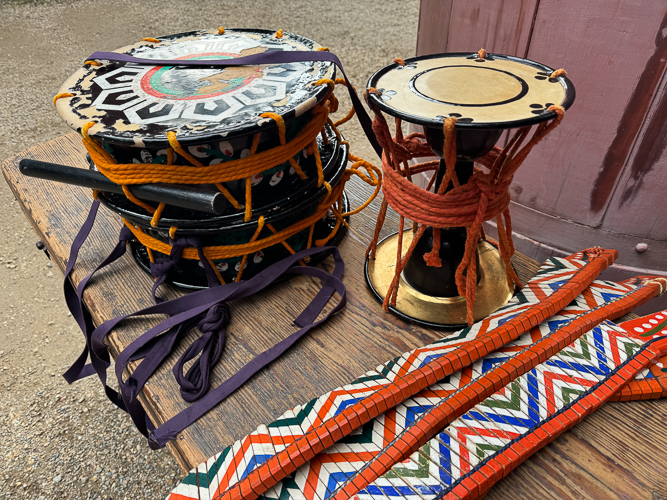
Instruments waiting for their musicians
Kasuga Wakamija Onmatsuri is a Shinto festival that was originally created to pray away a disease epidemic. It later became associated with guaranteeing a good harvest because of the importance of the harvest in ancient Japan. The festival has been held every year without fail for over 880 years. While the festival lasts for four days, the best day to be here is the 17th.
The main event is a procession that begins downtown and ends at the Kasugataisha Shrine. It authentically replicates the customs, manners, and clothing of every major period from the Heian period (794-1185) to the Edo period (1603-1868). I was at the entrance to the shrine for the festivities, and this is what I saw.

The shōzoku (traditional vestments) worn by Shintō priests are quite distinctive in their design. They reflect a court style that originated in ancient China but evolved in a uniquely Japanese direction during the Heian period (794–1185). Today, Shintō priests are the only people who wear such attire. Until recently, these vestments were exclusively male garments since women were barred from the Shintō priesthood.
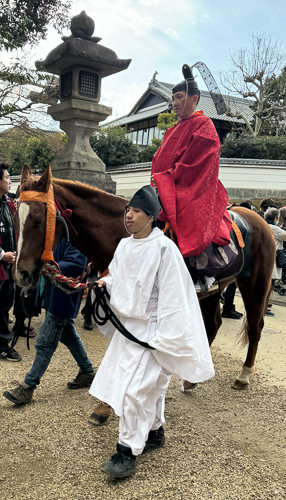
Shintō vestments fall into three classes: seisō (formal), reisō (ritual), and jōsō (ordinary). Formal seisō vestments are in the style known as ikan, consisting of a colored and sometimes patterned belted robe called a hō over hakama (loose trousers) and worn with a headdress known as a kanmuri . These are modeled on the robes of office worn by the ancient nobility.
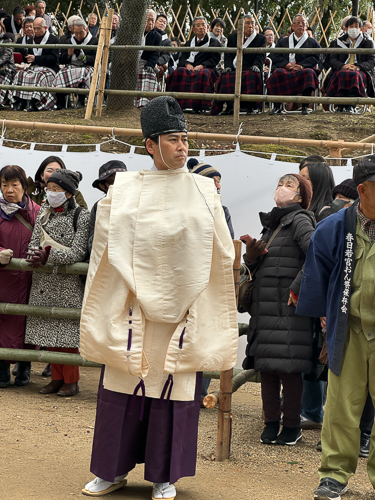 Jōsō (ordinary vestments) are called either jōe, meaning “purified robes,” or kariginu. These are based on the garments ancient nobles donned when hunting, and they are designed to facilitate movement. Priests wearing this costume don a tall hat called an eboshi instead of the kanmuri.
Jōsō (ordinary vestments) are called either jōe, meaning “purified robes,” or kariginu. These are based on the garments ancient nobles donned when hunting, and they are designed to facilitate movement. Priests wearing this costume don a tall hat called an eboshi instead of the kanmuri.
The shōzoku worn by Shintō priestesses today has been adapted from the traditional male costume.
As with every good parade, after the opening ceremonies, the children march in.
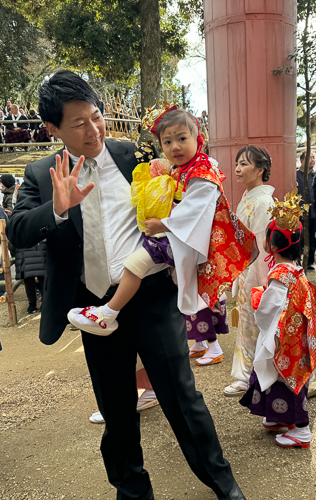
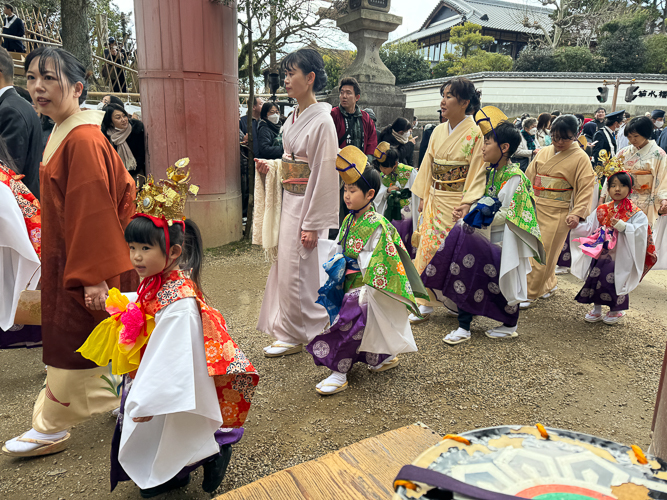
*
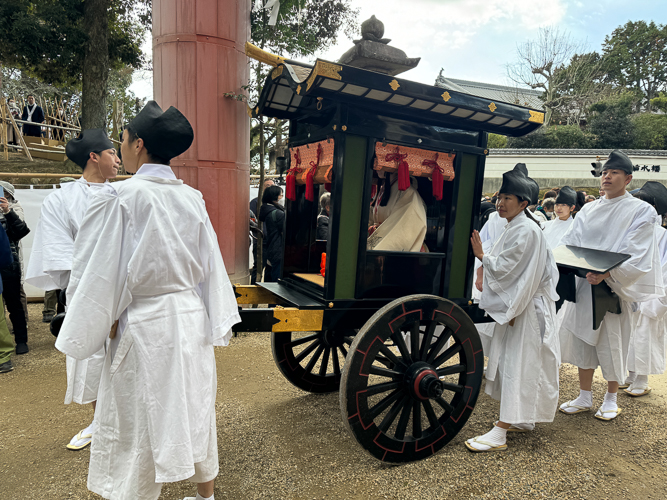
A carriage from the Heian Period
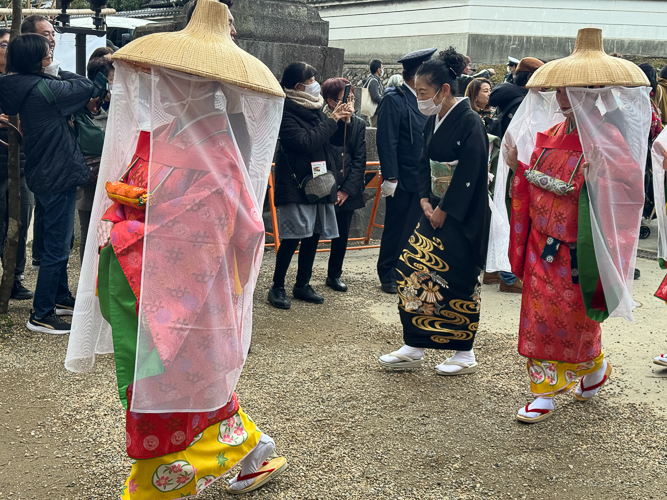
Tsubo Shozoku, used by Heian noblewomen
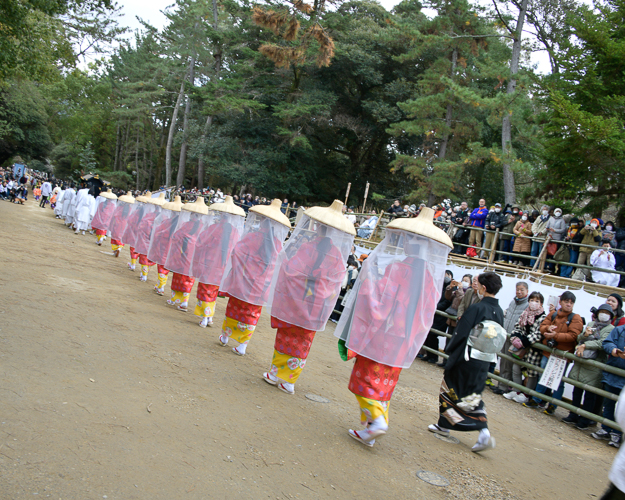
*

Atop the tall polls are gohei. The shrine priest uses the gohei to bless or sanctify a person or object in various Shinto rituals.
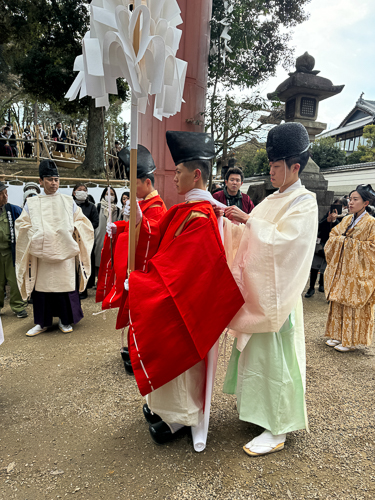
This gentleman is tying a roll of white cloth to the back of each of the two priests.
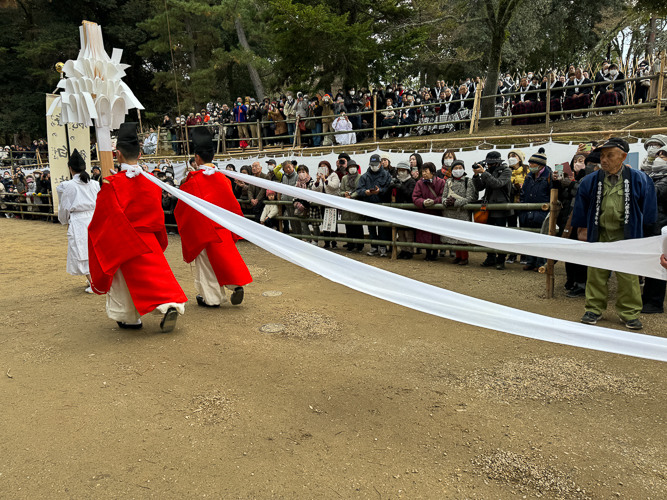
The long white roll of cloth unfurls as the priests walk. I could find nothing as to what this symbolizes.
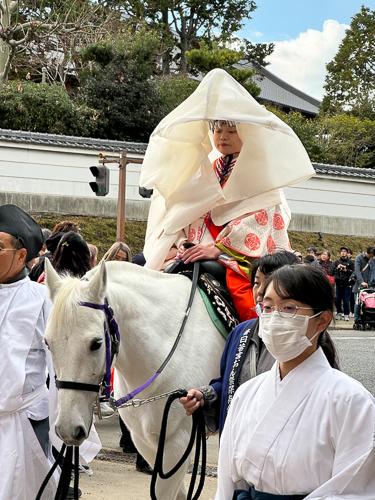
There were several veiled women on horseback. They are the miko (shrine maidens) for different shrines; Tanoichi, Nara, Yamano, Haidennoyao
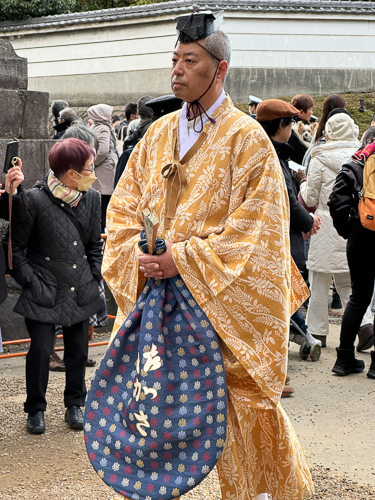
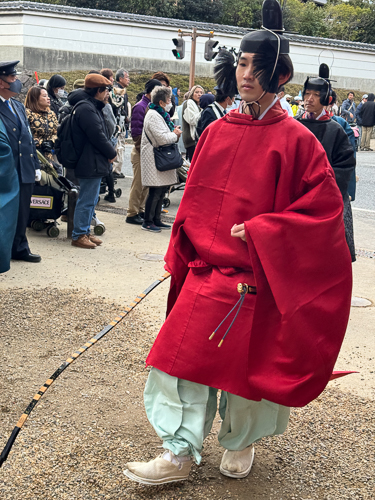
Zuijin (also called zuishin) was a government official in Konoefu ( the Headquarters of the Inner Palace Guards) during and after the Heian period; zuijin followed nobles to guard them when they went out. – They are wearing kanmuri hats with lacquered horse hairs.
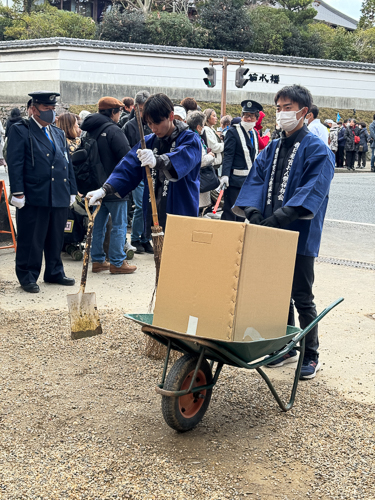
After the horses, the most important members of all came through.
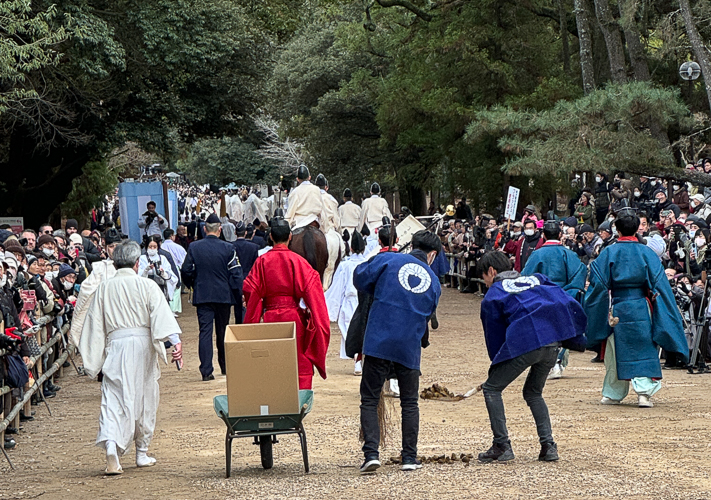
*
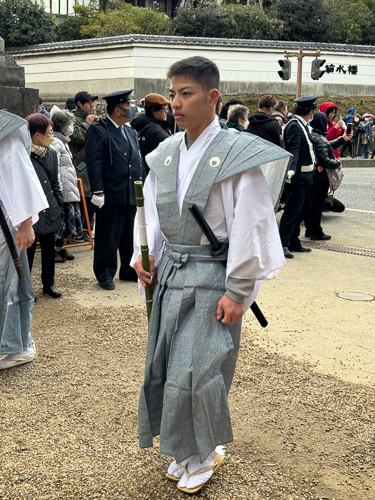
Montsuki is a type of formal kimono with family crests worn only by men.


Yabusame
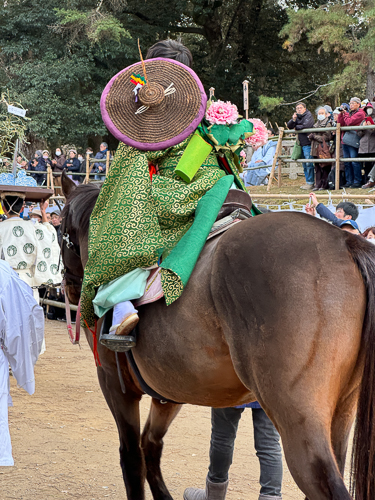
Yabusame is a type of mounted archery in traditional Japanese archery. This style of archery has its origins at the beginning of the Kamakura period. Minamoto no Yoritomo became alarmed at the lack of archery skills his samurai possessed. He organized yabusame as a form of practice.
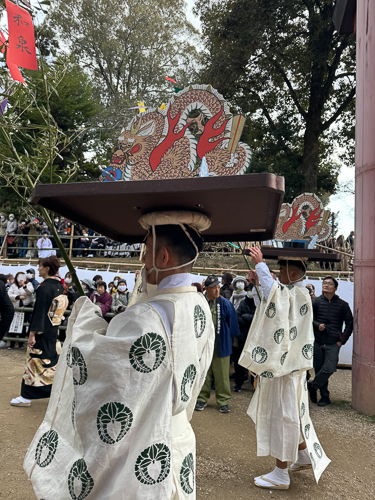
These gentlemen are wearing unusual hats and holding tanabata branches with colorful tanzaku papers. The hats have a long story of love, loss and dragons.

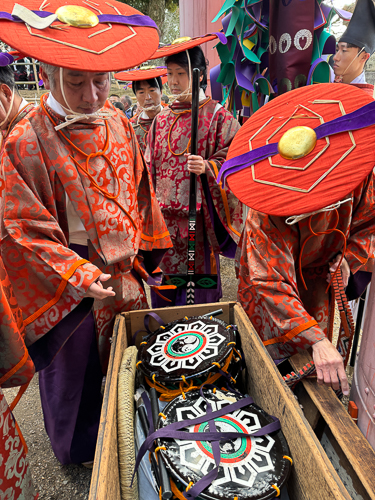
Musicians picking up their instruments. Note the mitsu-domoe marks (commas) on the drum. Different magatama are popular on Japanese drums. The magatama are symbols of “avoidance of evil” or the “magic of good fortune.
A very short clip of the sound of these unusual instruments
*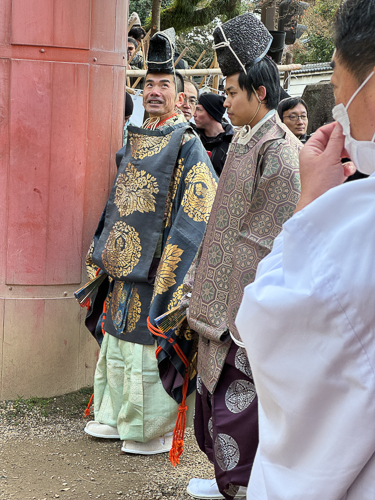 *
*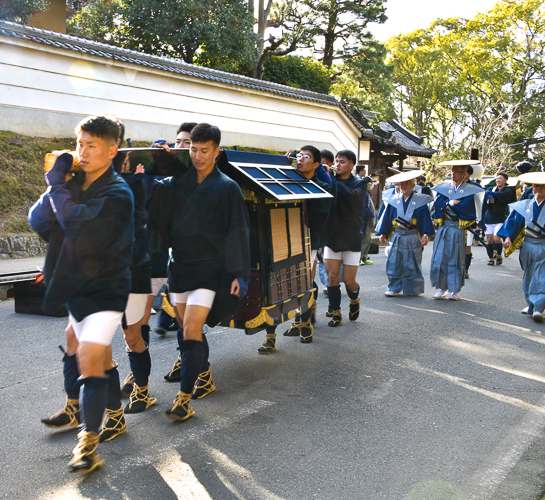 *
*
*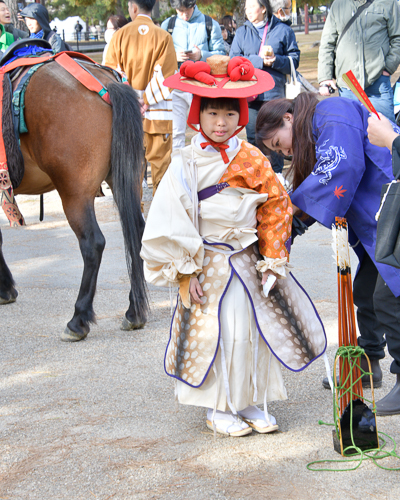
*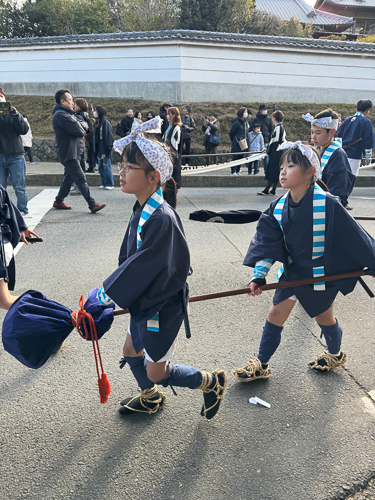
*
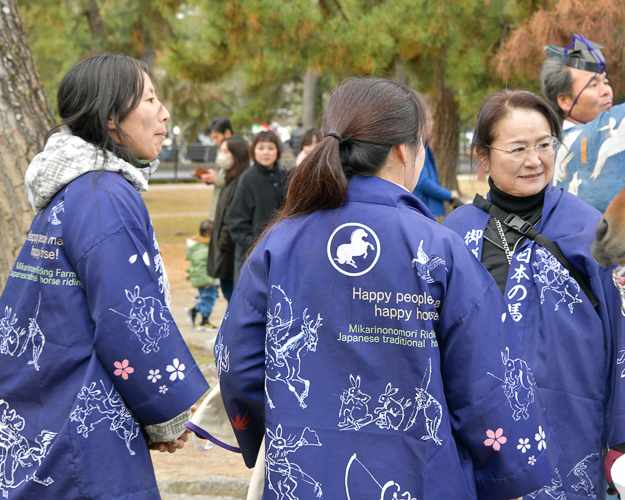
I assume these women were there to take care of the horses, judging by their jackets.
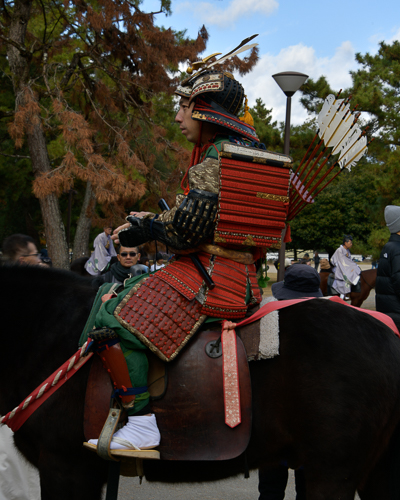
A man dressed as a samurai
Away from the temple, many of the people gathered, waiting to re-enter the temple. I was simply enamored with the colors and the kimonos.
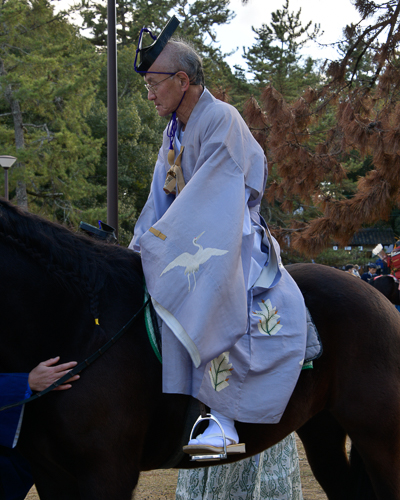 *
*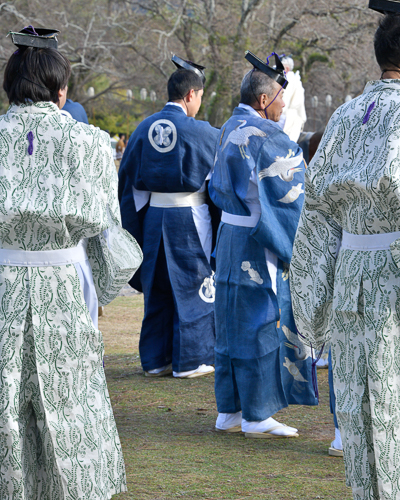 *
*

It was 40 degrees that day, and this man shows how cold we all were.
I know that so much more happened on the shrine premises. Once the procession arrives at the temple, the festival ceremony takes place over 24 hours. It involves both the senko no gi, which is a welcoming and departure of the deity enshrined at Wakamiya ( a subshrine of Kasugataisha), and the kanko no gi, where the deity is returned to the shrine. I felt privileged just to see what I saw.